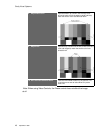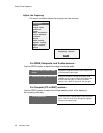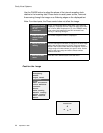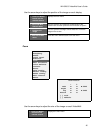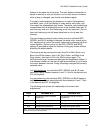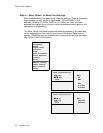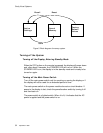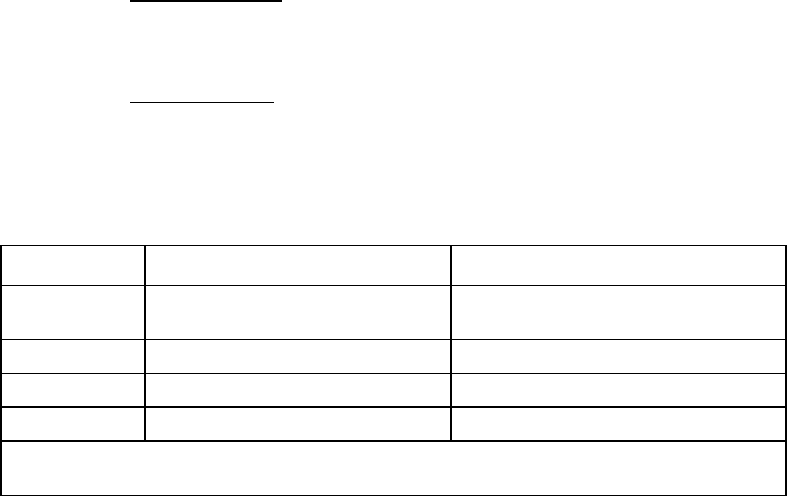
WN-5230-S VideoWall User’s Guide
47
balance is the same for all sources. The color balance information is
saved in memory in only one location, not for each source. However,
when a lamp is changed, you should color balance again.
The goal of color balancing the displays is to match the brightness
and white “color” of all the displays in video wall to each other, and
then match the intermediate gray shade. Therefore, color balancing is
accomplished with all displays turned on in the finished video wall. (If
you have only one unit, color balancing is not very important.) Do not
start color balancing until all lamps have been on for at least five
minutes.
The color balance menu provides control over the individual RED,
GREEN, and BLUE settings to balance the white color, as well as an
ALL adjustment to control the overall luminance by changing all three
colors together. Similar control for the RED, GREEN, and BLUE
settings is provided to adjust the balance of the gray shades without
affecting the white balance.
The down arrow key moves the cursor from All to Red, Green, and
Blue in the White column, then to All, Red, Green, and Blue in the
Gray column, then back to All in the White column again. The
left/right arrow keys increase and decrease the brightness number. It
is a common mistake to use the left-right arrow buttons to try to move
the cursor between columns. Doing this simply changes the currently
selected value.
For white balancing
, the individual RED, GREEN, and BLUE color
selections have a number between 0 and 31. Zero is the darkest and
031 the brightest.
For gray balancing
, the individual RED, GREEN, and BLUE balance
settings have a number associated with them between 0 and 7. Zero
is the darkest and 007 the brightest.
The following chart shows the relationship of the menu item
adjustments.
Color Increase will: Decrease will:
All Increase the overall luminance
(brightness)
Decrease the overall luminance
(brightness)
Red Change white toward red Change white toward cyan
Green Change white toward green Change white toward magenta
Blue Change white toward blue Change white toward yellow
Note: If one color needs to be increased, but that color is already as high as it can go, then the
other two colors can be decreased.




